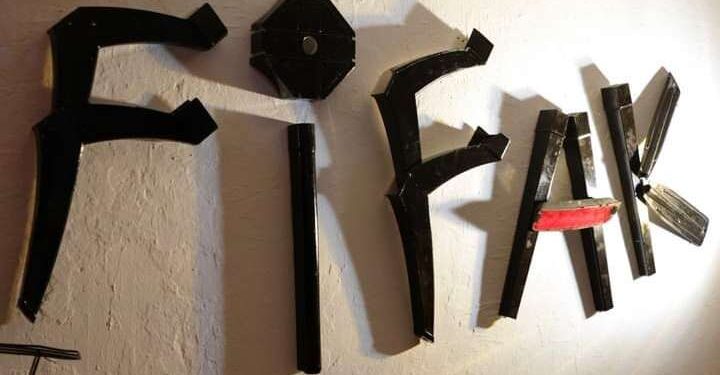After the official opening of the new edition of the Kélibia Amateur International Film Festival, on Saturday August 19, the time was quickly gone to the various festival competitions.
During a first evening followed by more than 1,500 people in a Zine Essafi theater full to crack, twelve films were screened including seven Tunisian works by young directors.
Sunday evening, the atmosphere was festive and the course of the evening perfectly piloted by Bilel Bali, a trilingual ceremonial master, very guaranteed and vigilant to every detail.
The evening began with the presentation of the three juries of the festival: one devoted to international competition, the second to the national competition and the third to the scenario/photo competition.
Immediately afterwards, the projections marathon started to continue until the morning without the public dropping out.
Besides, this Kélibia audience is to be greet. Composed of a majority of young moviegoers, it is nonetheless backed by a tradition of sixty years. In this city of Cap Bon, we watch over the festival as on a precious acquired to cultivate and everyone gets involved in their success.
Created by the Tunisian Federation of amateur filmmakers, yesterday still biennial, FIFAK has a long tradition of activism, popular education and cultural action. This inheritance of previous years is confirmed one year after another and, today, the rising generation has brilliantly took over from the elders.
All this was palpable, in the air of the first competition evening followed by many journalists, old truckers of the FTCA and also many directors who have solid ties with the amateur cinema from which they come.
A beautiful ovation has also been reserved for Selma Baccar, present at the forefront of guests and counting among the pioneers – still active and committed – of Tunisian cinema.
A set of choice was waiting for the public with films from various aesthetic horizons and sometimes distant countries such as India, Japan, Colombia, Iran or Kazakhstan. This means that the wait was feverish and that the public was impatient.
The Ketan Kuril (India )’s first “Clouds of Mansoon” (Mosson Clouds) is a real nugget. To tell the truth, its duration of thirty minutes makes it almost a medium film. Work of fiction, featuring against a background of confinement, a textile worker destabilized by the closure of the workshop where he works, this film evokes as much Italian neo-realism as certain filmic digressions of the Grand Ray.
Comedians who go through fixed plans, life as it is in the working -class districts of Mombay and a haunting rain punctuate this film which tells a distress then a fall. Social film, close to naturalism dear to Zola, “Clouds of Mansoon” recounts survival strategies and urban crushing by following a simple individual surrounded by dead ends.
Two animated films were also on the program. Entitled to the Moon and Back by Shuqin Li (Japan) has everything of a visual poem. With an admirable technique, the director features a grandmother, his granddaughter, a tadpole dead in an aquarium and a nursery rhyme which will become the wire of the spectator.
Spiral film, this round trip for the moon proceeds by successive abyss and porosities that make the characters take the other by the scansion of a song. As sensitive as a haiku, as fleeting as a print, this film is also a deep reflection on spontaneous generations and Shintô mysticism.
“All my scars vanish with the window” is a Colombian experimental film, whose two directors have chosen animation to say an inner disarray. While geometric figures twirl on the screen, a voice called words that express both a quest and a storm, scars and redemption.
The gaze lets itself be penetrated by the networks and fragments that occupy the screen as a rebus on which blows a wind which carries, disperses and recomposes each bit. A deeply visual and anchored work in this digital art, creator of elusive topographies.
Experimental cinema was truly at the heart of this first evening. Two other films have confirmed it with their worried universes, punctuated by deflagrations and dissections, crossed by the shadow of Thanatos and that, martial, of soldiers in maneuver on a battlefield, very metaphorically, experimental.
In “Magi” by Timothée Calame (France), war images are marked out by a soldier scrutinizing with his twins, a shepherd who would be absent from the warrior scene which surrounds him.
In “Dawn of Death” by Iranian Armin Rajaei, it is the dawn of a death that it is through this time, experiments on animals. Given, these two films which basically look alike, are parables whose meaning is intimately linked to images.
Finally, “The Phone” by Alimzhan Almukhan (Kazakhstan) is a fiction of ten minutes that features a teacher’s phone’s phone, by one of the students of a school. Moral tale between Voltaire and the Countess de Ségur, this very endearing film plays on the registers of envy, the lie, the concealment and shows the dark side of an exemplary student.
Very applauded, all these films brought in their wake not a touch of exoticism but indeed cinema lessons. Technical mastery narrative fluidity and aesthetic research appeared at each plan. What nourish cinephilia and the desire to film young Tunisian amateurs who were at the forefront of this impromptu banquet with the flavors of three continents.
The evening then continued with the screening of six Tunisian films to which we will come back soon.








